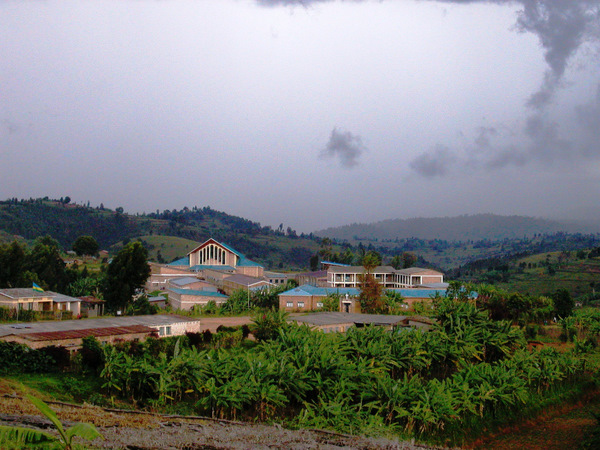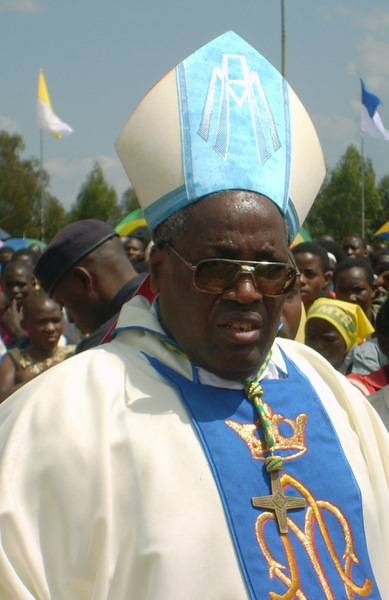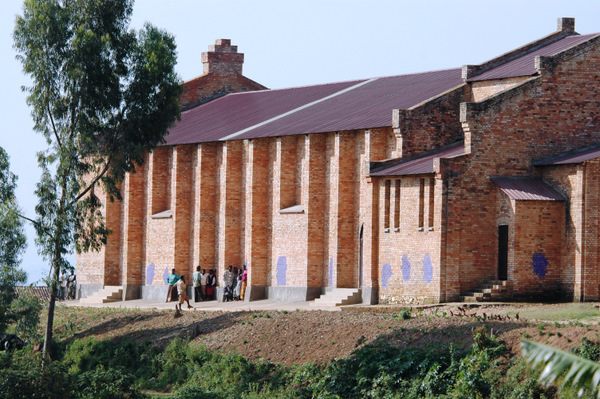Location of the Shrine of Our Lady of Kibeho

Like many other Shrines, the Shrine of Our Lady of Kibeho has its own history, its symbols, its iconography and sites which are unique. It is located in the parish of Kibeho in the Southern region of Rwanda, part of the Diocese of Gikongoro led by Bishop Augustine Misago.
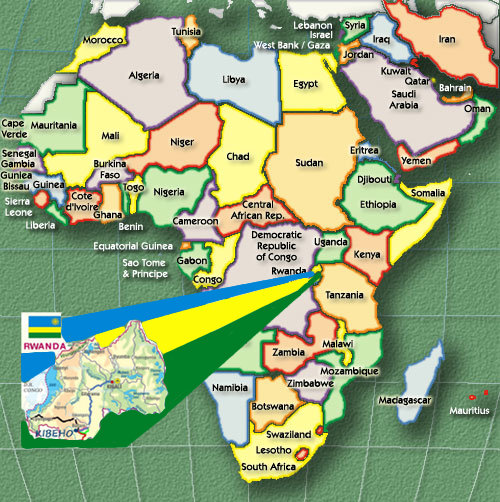
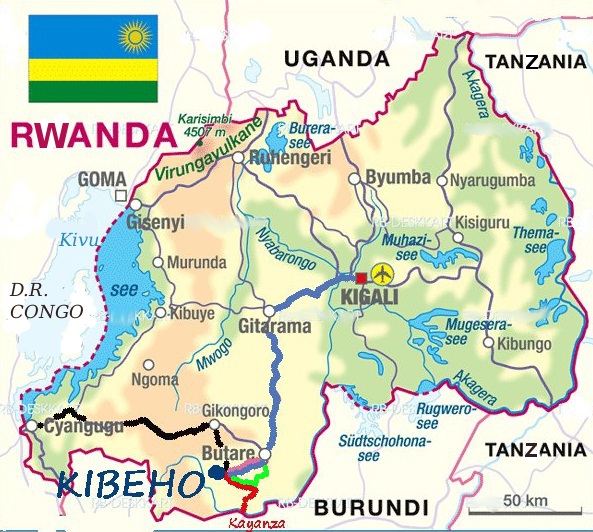
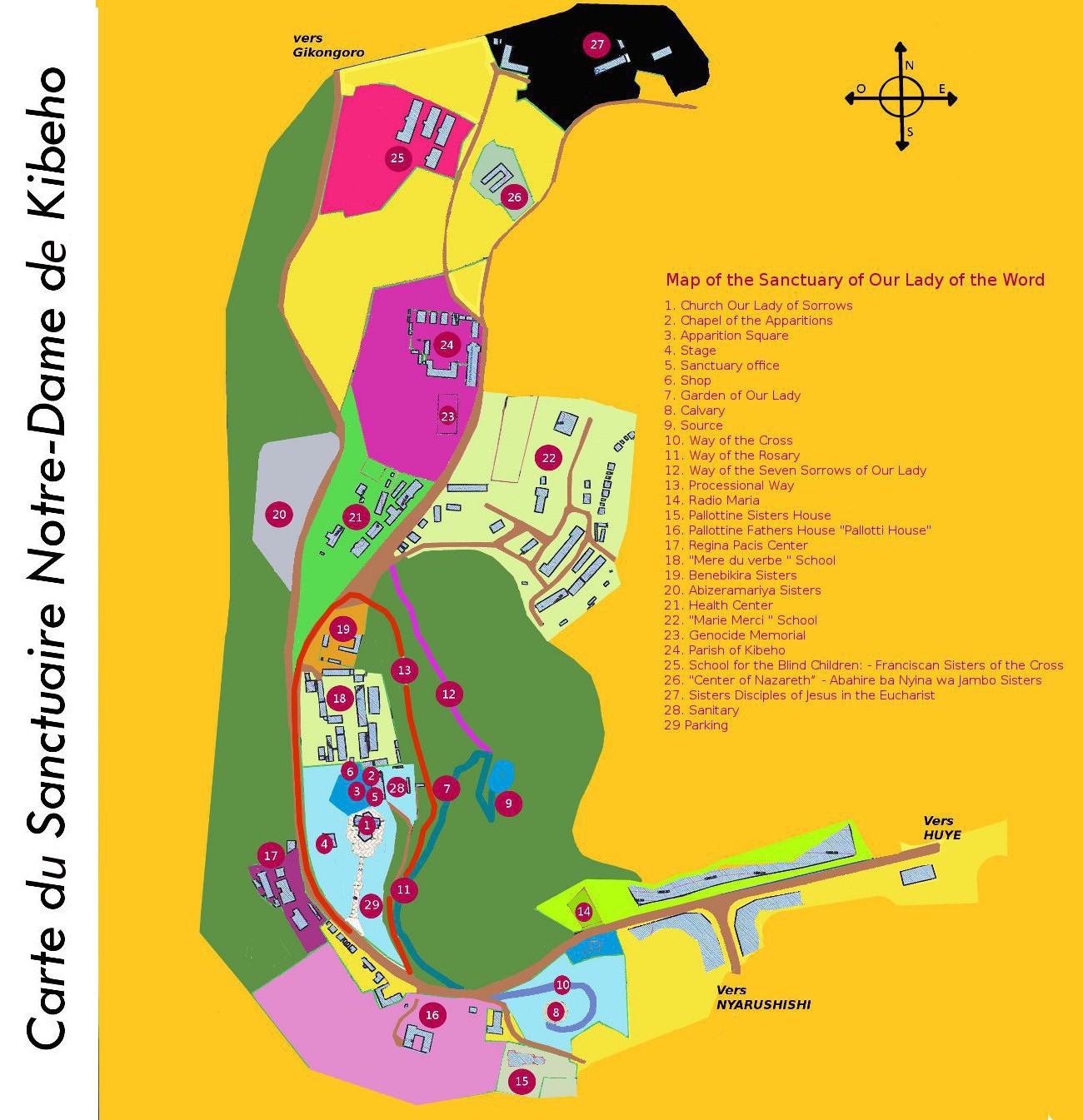
Kibeho
Kibeho is situated in the southern part of Rwanda, in the district of Nyaruguru, 36 km from the residence of the Bishop of Gikongoro and 30 km from the residence of the Bishop of Butare. This isolated place is known and spoken of as a place of apparitions and pilgrimage.
It all started on the day of 28th November, 1981, when a young student of Kibeho College named Alphonsine Mumureke claimed to see a lady of incomparable beauty who presented herself as "Nyina wa Jambo", i.e. "Mother of the Word", immediately recognised by the supposed visionary as the Blessed Virgin Mary, mother of Jesus, our Saviour.
Rwanda
But why did the Virgin Mary in a place like Kibeho, in the centre of Africa? Not because Kibeho was merited more than other places. It is because our Heavenly Mother, in her mercy and maternal tenderness for all her children, manifests herself as she wants, where she wants, to whom she wants and when she wants, as Our Lady told the visionaries when asked this question.
Therefore, in accordance with the divine providence, the Blessed Virgin Mary had chosen to appear at Kibeho to deliver her important and urgent message to the whole world.
Today, Kibeho has become a place for pilgrims to work on the conversion of their hearts and renew themselves through the salvific waters of the sacrament of reconciliation and the Holy Eucharist. This Marian shrine is called to be a place for the new evangelization of Africa.
To understand the apparitions of the Blessed Virgin Mary between 1981-1989 at Kibeho, it is important to understand first and foremost the geographical, historical, cultural and ecclesial context in which they took place:
The Republic of Rwanda, located in the centre of Africa, lies 1,200 km from the Indian Ocean and 2,000 km from the Atlantic Ocean. According to official government data, Rwanda covers an area of 26.340 km² with a very strong population density, reaching 9.3 million inhabitants in 2007. Rwanda is a mountainous country with a rich vegetation. The general atmosphere is pleasant. The average temperature lies between 24.6 and 27.6 C °. The average rainfall is 110 to 200 mm per year, whereas most of the rain falls during the two rainy seasons from March to May and from September to the middle of December.
The country is divided into 5 main administrative entities: Northern Province, Southern Province, Eastern Province, Western Province and the city of Kigali and offers a great variety of different landscapes: The northwest of the country is advantageous for agriculture and fishing due to the Virunga volcanic mountains located there. The highest peak reaches 4,500 metres. The beautiful Lake Kivu, located at the border to the Democratic Republic of Congo, makes this area a pleasent place to visit. Other regions stand out due to their prairies, hills, lakes and swamps.
In addition to this, Rwanda has three National Parks: The area of the volcanoes, Akagera National Park and Nyungwe National Park, which is near Kibeho. These national ressources are a well protected and cared for treasure of the people of Rwanda.
As one of very few African countries, all Rwandans speak the same Bantu-language: "Kinyarwanda”. Together with Kinyarwanda, English and French are the official languages of Rwanda. In some contextes, there is also used Swahili.
In Rwanda, overpopulation is one of the major problems the authorities are trying to deal with. The country is one of the pourest in the world. At the same time, Rwanda is counted among the most successful African countries regarding development and national economy.
Most of Rwanda's inhabitants live on agriculture and livestock. Thus, almost all the land is cultivated, with the average property per household being less than a hectare.
Due to the mostly private management of natural ressources, Rwanda's forests are endangered to disappear within the next decades. Rwanda is endangered to become a small desert. For this reason, the Rwandan authorities are vigorously preventing disordered exploitation of the forest by establishing systematic reforestation.
The Diocese of Gikongoro
The Diocese of Gikongoro in the Southern Province of Rwanda is one of 9 dioceses of the Catholic Church of Rwanda and the only diocese throughout Sub-Saharan Africa, with officially recognised Marian apparitions in its history.
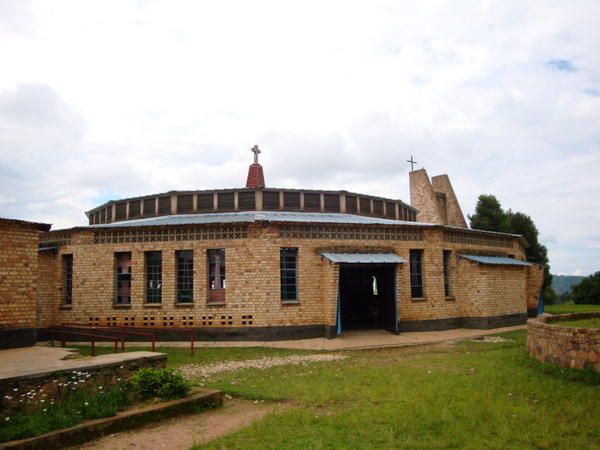
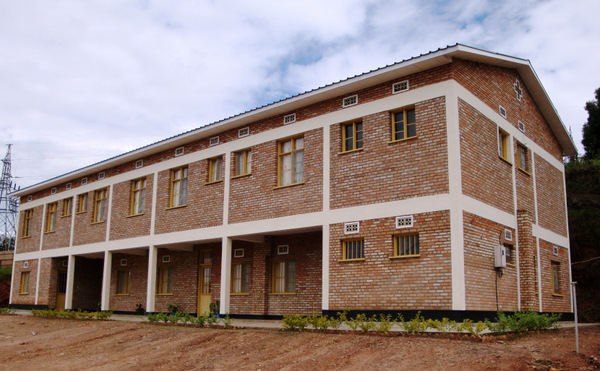
It was founded on March 30th, 1992, by the division of the Diocese of Butare. Its first bishop, Mons. Augustin Misago, was appointed on June 28th, 1992. The diocese is a member of the Catholic Episcopal Conference of Rwanda, whose headquarters are in Kigali. By now it counts 12 parishes with 31 priests of various nationalities and hosts more than fifteen religious congregations with various socio-pastoral activities.
The Diocese of Gikongoro lies in a mountainous region with an average altitude between 1.800 and 2.000 meters above seelevel.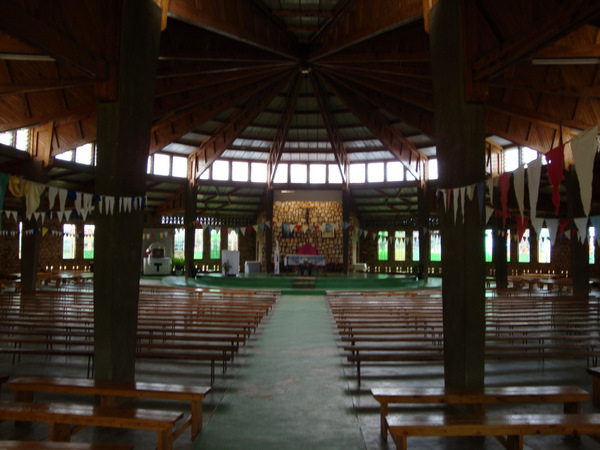
It covers an area of 2.057 kms², including part of Nyungwe National Park as well as the districts of Nyamagabe, Nyaruguru, Nyanza, and Huye. The surrounding dioceses are the Diocese of Bubanza (in the Republic of Burundi) in the South, the Diocese of Butare in the East and North-East, the Diocese of Cyangugu in the South-West, the Diocese of Nyundo in the North-West, and the Diocese of Kabgayi in the North.
The Diocese of Gikongoro is in favour of a rich water-supply from the rivers Akanyaru, Giswi, Mhogo Rukarara and Mbirurume, who have their source (source of Nile) in Nyungwe forest and feed Nyabarongo river and Akagera river.
Despite the abundant waters from its rivers and streams, the soil in the territory of the Diocese of Gikongoro is not very fertile. It is too acidic which makes the area one of the poorest areas of the country, facing chronic food shortages. Despite initiatives of government and NGOs, the impoverishment of the population of Gikongoro continues to increase visibly.
H.E. mons. Bishop Augustin Misago
Before becoming the Bishop of Gikongoro, Mons. Augustin Misago was a priest in the Diocese of Byumba, Rwanda. He was born in Ruvune in 1943, entered the Major Seminary of Nyakibanda in 1965 and was ordained on July 25th, 1971. After three years of ministry, he was sent to Rome for a doctorate in theology and patristic science, which he obtained in 1979 at the Patristic Institute 'Augustinianum'.
From 1980 on he lectured at Nyakibanda Interdiocesan Major Seminary. In addition to his membership of several commissions of the Episcopal Conference of Rwanda, on May 14th, 1982, he was appointed member of the theological commission dealing with the apparitions of Kibeho. In February 1985, he was appointed Rector of Nyakibanda Major Seminary and remained in this position until his election as the first bishop of Gikongoro on June 28th, 1992 and has been serving his diocese as a bishop ever since. Thus, he is the ordinator of the apparitions of Kibeho.
Kibeho parish
Kibeho parish belonged to the Diocese of Butare up to the year 1992 when the Diocese of Gikongoro was erected and Kibeho parish became part of the new diocese. This parish was characterized by the exceptionally strong faith of its Christians. Indeed, founded in 1934 and dedicated to "Mary Mother of God", Kibeho parish gave a large number of priests and consecrated persons to the Church of Rwanda. Among its sons many became diocesan and religious priests in various congregations and religious orders, while an impressive number of its daughters embraced religious life in various religious families. At the time of the apparitions, Kibeho parish was equipped with pastoral structures: a team of priests responsible for the pastoral activities of the parish and a community of religious sisters involved in the education of children in a primary school and a secondary school for girls. It was in this secondary school, that three students were favoured by the apparitions of Our Lady.
The parish of Kibeho served as the area of reference for the apparitions and for the occasional pilgrimages in recent years. It is now part of the areas of the Shrine. The parish priest of Kibeho parish is at the same time dean of Kibeho (the deanery consists of four parishes at the moment). The diocese is still trying to improve the infrastructure and the services of this area.




